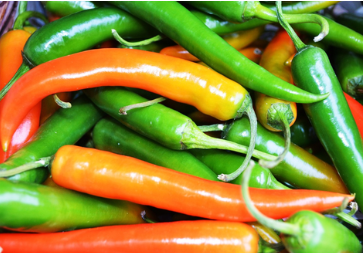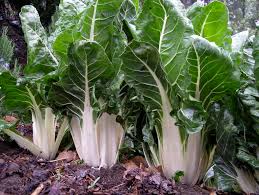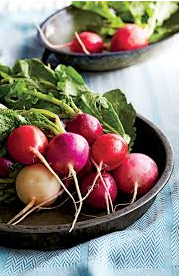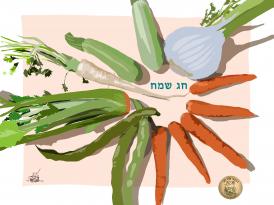Why is the spicy pepper, actually, spicy?
This sounds like the question, “Why does a zebra wear pajamas?" By the way, the zebra question has a good answer, but since this blog is about fruits and vegetables and not African wildlife, we'll leave that for now.
Let's return to the spicy pepper. As I've mentioned several times, plants develop and retain traits only when these traits provide an evolutionary advantage. So what does the pepper get out of being spicy?
Well, the active compound in spicy pepper responsible for its hot taste is a molecule called capsaicin. Its spiciness deters mammals like rodents from eating its fruits (peppers), thus ensuring the survival of the next generation of seeds.
But there's apparently another reason. It turns out that capsaicin also has anti-bacterial properties. The origin of spicy peppers comes from the hot regions of North and Central America. As is known, hot areas are fertile ground for bacterial development, so we can say that capsaicin also functions as a kind of immune system for the pepper.
Okay, but why is this interesting?
It's interesting because this trait likely defined its distribution in global cuisine. The spicy pepper was one of the first food plants to arrive in the Old World from America.
There are reports that it arrived in Spain already by the end of Columbus's first voyage in the mid-16th century, and it quickly spread worldwide.
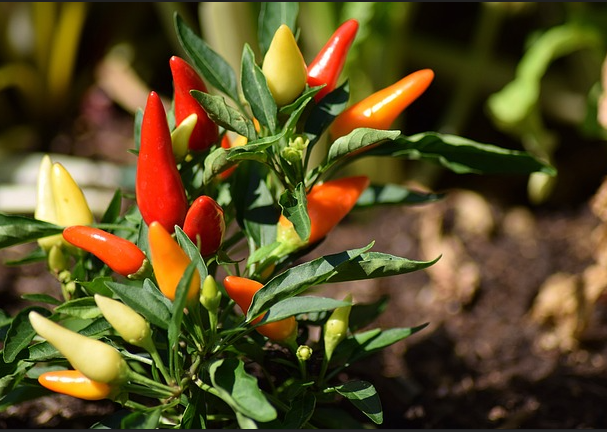
Worldwide? Well, that's not precisely accurate.
If we look at the world map, we'll discover that besides certain parts of Spain, the spicy pepper (and this doesn't include black pepper, which is an entirely different plant originating in India and widespread since ancient times) is hardly prevalent in Western Europe and entirely absent from its northern regions.
On the other hand, along the coasts of North Africa, the Middle East, India, Indonesia, the Philippines, China, Thailand, and across the Asian steppe from Mongolia to Hungary, it became an integral part of local cuisine.
At a glance, one could say that the spicy pepper is integrated into the local cuisine of countries that can generally be defined as 'hot'. Conversely, as you move northward and away from the Asian steppe and Mediterranean coastlines, the use of spicy pepper becomes rare and difficult to encounter in local cuisines.
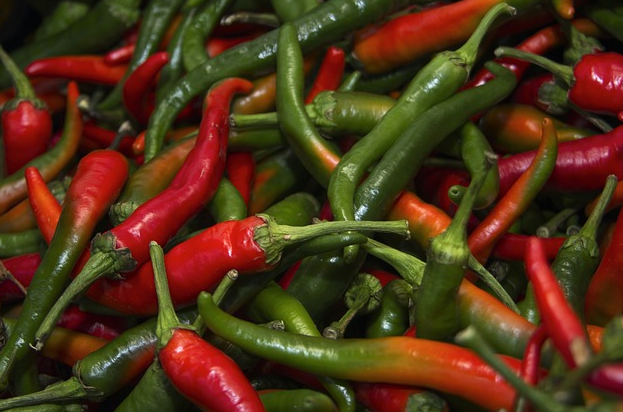
Why, actually?
One possible answer is that it's more suitable for cultivation in hot countries. This is broadly true, but if they managed to grow tomatoes in Northern Europe, there's no reason they can't grow spicy peppers.
Moreover, since spicy peppers are consumed in dried form and the fruit is relatively durable, there's no reason it shouldn't be widespread in Northern Europe. After all, trade brought many other products to Northern Europe, like the black pepper we have already mentioned.
The reason spicy peppers are common in cuisines of hot regions is likely a different one. Remember when I mentioned that capsaicin has anti-bacterial properties?
This trait, which helps the pepper defend against bacteria, also makes food seasoned with it more resistant to bacterial growth.
Before the invention of refrigeration, such a trait is a serious force multiplier that allows extending food's shelf life – even if just for a few hours or days (depending on the type of food).
In contrast, Northern Europe is essentially a large refrigerator. Weather conditions make it difficult for many bacteria to develop quickly, so there's no point in burning one's throat (and in the case of certain spicy peppers, other body areas).
In other words, at the heart of the love for spicy flavors in the Far East and Middle East (as well as Central American cuisine) lies a practical reason. This practical reason also created a food culture and acquired taste, and there are people who genuinely love extreme spiciness.
This is the place to note that the original wild varieties were likely much milder than the peppers we encounter today. Pepper spiciness is determined by a scale called the Scoville scale.
There are hundreds of pepper varieties, and as part of the domestication process, some contain crazy concentrations of capsaicin. We're bringing you a mix of four pepper varieties grown in the Arava with varying levels of spiciness.
It starts with a standard spicy pepper, from the Jalapeño variety (which is one of the varieties domesticated even before Europeans arrived in Central America) and is considered to have medium spiciness ranging between 2,500 and 10,000 Scoville.
But you'll also find an El Niño variety pepper with a wrinkled appearance, a yellow Cayenne variety – its spiciness ranges between 30,000 and 50,000 Scoville, and it's already very spicy for most mortals.
Want something spicier? If you're particularly daring, we've also included peppers from the Dark Moon variety. This is a stunning black-purple pepper. I couldn't find its Scoville rating, but it's likely over 100,000 Scoville.
Recommendation: Consume this little guy carefully, and when handling it, be sure to wash your hands thoroughly and keep them away from your eyes.

